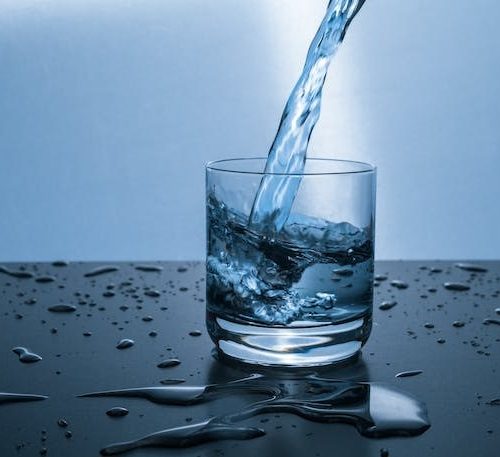Introduction to White Masterbatch
White masterbatch is a specialized additive widely used in the plastic manufacturing industry to enhance the appearance, quality, and performance of plastic products. It is a concentrated mixture of pigments and additives that, when blended with raw plastic materials, provides excellent whiteness, opacity, and improved physical properties. As a key component in plastic production, white masterbatch plays a vital role in delivering durable and aesthetically superior plastic items.
What Is White Masterbatch Made Of?
The main ingredient in white masterbatch is titanium dioxide (TiO2), a highly effective plastic whitening agent known for its strong opacity and brightness. Along with titanium dioxide, it contains polymer carriers compatible with various plastics like polyethylene (PE) and polypropylene (PP), ensuring smooth dispersion. Additional additives may include stabilizers and processing aids that enhance the masterbatch quality enhancement and facilitate efficient plastic manufacturing.
How White Masterbatch Works in Plastic Manufacturing
During manufacturing processes such as extrusion or injection molding, white masterbatch is mixed with raw plastic pellets. The pigments and additives disperse uniformly throughout the polymer, resulting in plastics with consistent color, improved whiteness, and better surface finish. Besides enhancing appearance, some formulations improve the plastic’s UV resistance and overall durability, making the product suitable for various demanding applications.
Key Benefits of Using White Masterbatch
The use of white masterbatch offers several critical benefits for plastic producers:
- Improved Appearance: Provides a bright, clean white color, enhancing product appeal.
- Improved Opacity: Helps conceal surface flaws and boosts the overall appearance of plastic items.
- UV Protection: Certain plastic pigmentation additives help prevent color fading from sun exposure.
- Cost Efficiency: Concentrated pigments reduce the quantity needed, lowering production costs.
- Ease of Processing: The masterbatch form ensures better pigment dispersion, minimizing defects.
- Consistent Quality: Ensures uniformity across production batches, improving reliability.
Applications of White Masterbatch in Different Industries
The versatility of white masterbatch allows its use in numerous sectors:
- Packaging Industry: For producing bright, attractive containers, bags, and films.
- Automotive Sector: Enhances durability and appearance of plastic parts.
- Consumer Goods: Used in household products such as buckets, crates, and toys.
- Construction Materials: Applied in pipes, fittings, and other structural plastic components.
- Textile Fibers: Improves brightness and whiteness of polymer-based fibers.
These widespread applications highlight the essential role of white masterbatch in improving plastic product quality across industries.
How White Masterbatch Enhances Plastic Quality
Beyond coloration, white masterbatch contributes significantly to enhancing overall plastic quality by:
- Increasing mechanical strength and plastic product durability.
- Providing a smoother and more attractive surface finish.
- Improving processability during extrusion and molding.
- Provides UV resistance that extends the lifespan of plastics subjected to sunlight exposure.
- Minimizes common defects like streaks and inconsistent coloring in the finished product.
Factors to Consider When Choosing White Masterbatch
Selecting the appropriate white masterbatch is critical to achieving desired results. Consider the following:
- Compatibility: The polymer carrier in the masterbatch must match the base plastic type.
- Pigment Quality: Use high-grade titanium dioxide for superior whiteness and opacity.
- Additives: Inclusion of stabilizers and antioxidants tailored to the product’s application.
- Pigment Concentration: Balancing pigment load ensures optimal color and cost-effectiveness.
- Supplier Selection: Reliable masterbatch supplier selection guarantees consistent product quality and technical support.
Common Challenges and Solutions with White Masterbatch
Some common challenges in using white masterbatch include:
- Poor Pigment Dispersion: Leads to streaks and uneven color. Solution: Use high-quality masterbatch and optimize processing conditions.
- Compatibility Issues: Causes weak or defective products. Solution: Ensure polymer compatibility.
- Cost Management: High pigment load can increase expenses. Solution: Find the right balance between pigment concentration and product quality.
- UV Degradation: Fading under sunlight exposure. Solution: Incorporate UV stabilizers in the masterbatch formulation.
Tips for Effective Use of White Masterbatch in Production
To maximize benefits from white masterbatch, follow these best practices:
- Conduct test runs to determine optimal masterbatch dosage.
- Maintain consistent processing parameters and mixing techniques.
- Collaborate closely with suppliers for customized masterbatch solutions.
- Monitor product quality regularly to ensure uniform color and performance.
- Combine with other additives as needed to meet specific product requirements.
Conclusion: Why White Masterbatch Is Essential for High-Quality Plastics
To conclude, white masterbatch plays a vital role as an additive by improving the color uniformity, overall quality, and longevity of plastic goods. Its ability to deliver consistent whiteness, better opacity, and enhanced UV protection makes it an essential component in the plastics industry. By carefully selecting and effectively using white masterbatch, manufacturers can achieve superior product appearance, cost efficiency, and meet the high standards of various industries.






